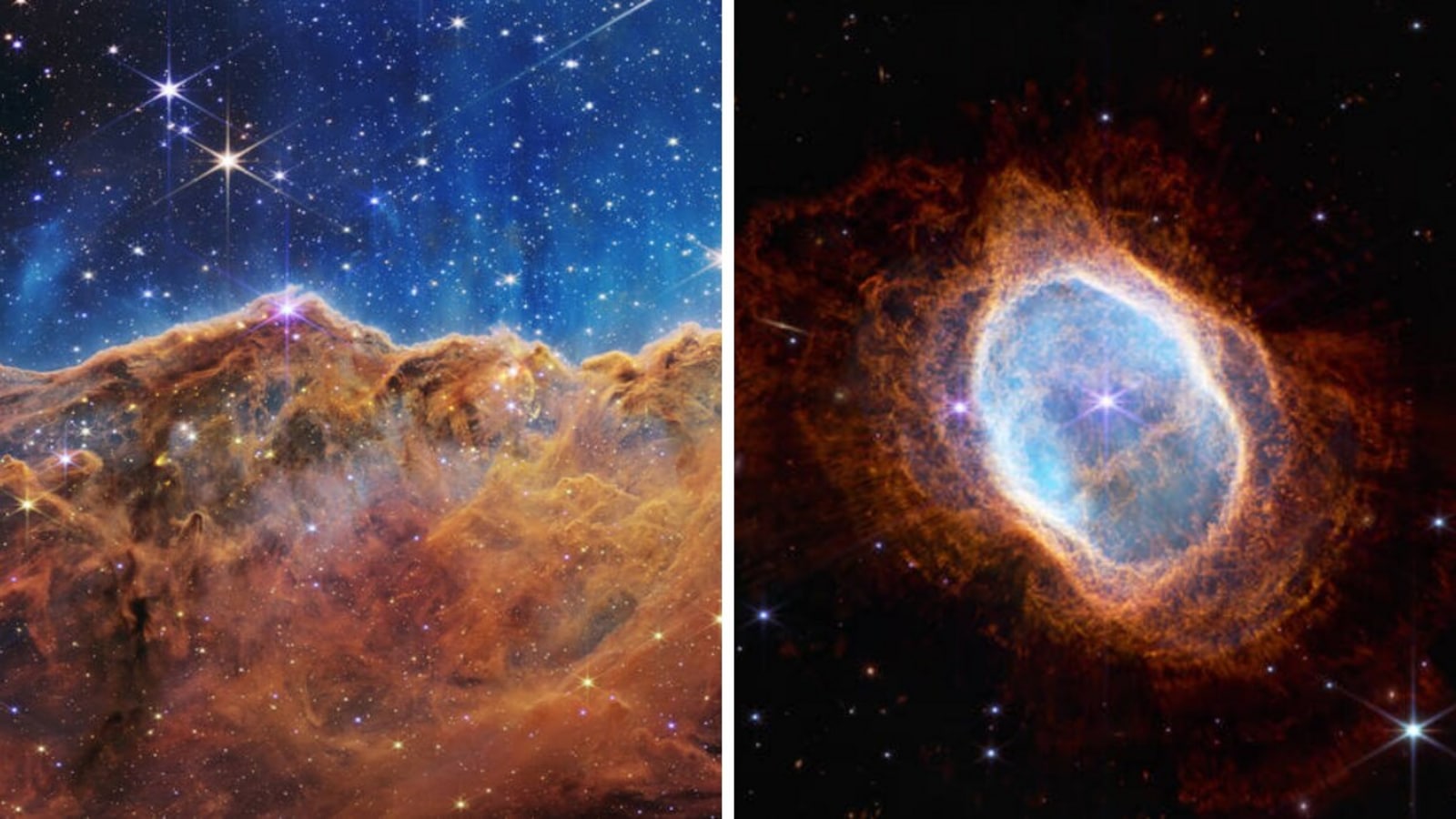What is Nebula? Here is what NASA says about 2 nebulae captured by James Webb Space Telescope
Here is what NASA explains about the image captured by the James Webb Space Telescope of Carina Nebula, and Southern Ring Nebula.

What do you know about nebulae? Recently, when NASA released the first images from the James Webb Space Telescope, there were a total 5 images out of which two were of nebulae- Carina Nebula, and Southern Ring Nebula. But do you know what a nebula is? According to NASA Space Place, "A nebula is a giant cloud of dust and gas in space. Some nebulae (more than one nebula) come from the gas and dust thrown out by the explosion of a dying star, such as a supernova. Other nebulae are regions where new stars are beginning to form."
It can be known that mostly hydrogen and helium forms Nebulae. Nebulae exist in the space between the stars—also known as interstellar space. The closest known nebula to Earth is called the Helix Nebula. It is the remnant of a dying star—possibly one like the Sun. It is approximately 700 light-years away from Earth. In order to see and capture pictures of nebulae, astronomers use very powerful telescopes. Space telescopes such as NASA's Spitzer Space Telescope and Hubble Space Telescope are used for the same.
Meanwhile, if you are not aware of the two nebulae captured by the James Webb Space Telescope, then here is all you need to know:
1. Carina Nebula
According to the information provided by NASA, the image captured by the telescope of Carina Nebula is actually the edge of a nearby, young, star-forming region called NGC 3324 in the Carina Nebula. The image reveals for the first time previously invisible areas of star birth. Called the Cosmic Cliffs, Webb's seemingly three-dimensional picture looks like craggy mountains on a moonlit evening. In reality, it is the edge of the giant, gaseous cavity within NGC 3324, and the tallest “peaks” in the image are about 7 light-years high.
The cavernous area has been carved from the nebula by the intense ultraviolet radiation and stellar winds from extremely massive, hot, young stars located in the center of the bubble, above the area shown in the image.
2. Southern Ring Nebula
Explaining the image of the Southern Ring Nebula captured by James Webb Space Telescope, NASA said, "Some stars save the best for last. The dimmer star at the center of this scene has been sending out rings of gas and dust for thousands of years in all directions, and NASA's James Webb Space Telescope has revealed for the first time that this star is cloaked in dust."
Two cameras aboard Webb captured the latest image of this planetary nebula, cataloged as NGC 3132, and known informally as the Southern Ring Nebula. It is approximately 2,500 light-years away, NASA further informed.
Catch all the Latest Tech News, Mobile News, Laptop News, Gaming news, Wearables News , How To News, also keep up with us on Whatsapp channel,Twitter, Facebook, Google News, and Instagram. For our latest videos, subscribe to our YouTube channel.





























